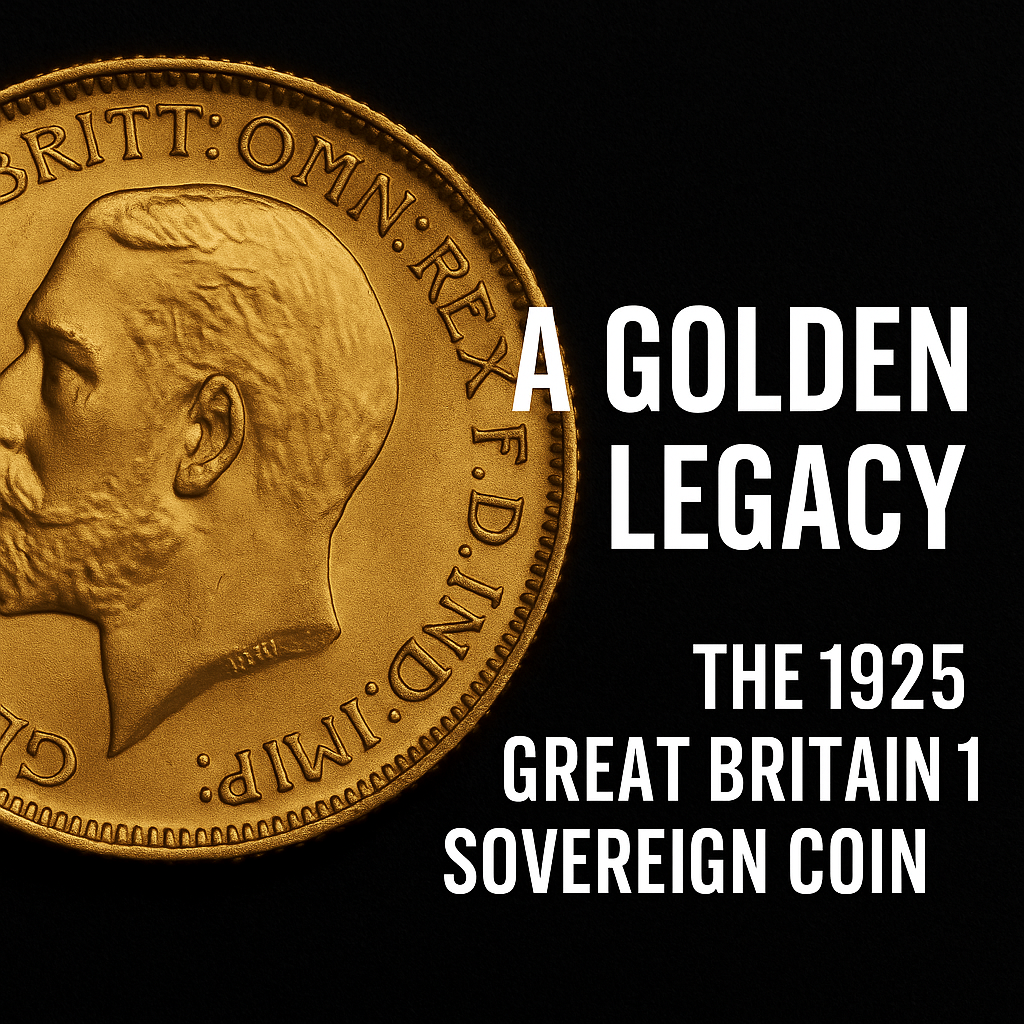A Golden Legacy: The 1925 Great Britain 1 Sovereign Coin

Discover the historical, artistic, and investment value behind one of Britain’s most storied gold coins
Part I: A Coin Forged in Empire and Transition
The 1925 Great Britain 1 Sovereign gold coin is more than just currency—it's a time capsule of an empire in flux. Struck in the aftermath of World War I, this coin marks a pivotal moment in British monetary history: the short-lived return to the gold standard.
That year, under the reign of King George V, the British Royal Mint resumed the minting of sovereigns for the first time since 1917. But unlike earlier issues intended for circulation, the 1925 sovereigns never entered the hands of the public. Instead, they remained in vaults as reserves—a symbol of financial strength and global prestige.
Part II: A Design Steeped in Royal Symbolism
The obverse of the coin features a portrait of King George V, elegantly rendered by Sir Bertram Mackennal. His likeness is surrounded by Latin inscriptions proclaiming him 'King of all the Britons and Emperor of India.'
On the reverse, you'll find the iconic Saint George slaying the dragon, designed by Italian artist Benedetto Pistrucci. This dramatic image has graced sovereigns since 1817, symbolizing bravery, victory, and the enduring power of the British monarchy.
Despite being nearly 100 years old, this particular specimen is graded MS65 by NGC, placing it among the top tier of surviving examples. Fewer than 2% of all 1925 sovereigns receive such high mint-state grades, making it a coveted find for serious collectors.
Part III: Rarity, Market Value, and the Investor's Edge
What makes the 1925 sovereign uniquely valuable?
Historical significance: It was minted in a year when Britain re-entered the gold standard—a policy quickly reversed by 1931. These coins represent a fleeting return to pre-war economic ideals.
Scarcity in top grades: While over 4 million coins were struck, few remain in such pristine condition. MS65 examples are extremely limited, and higher grades like MS66 or MS67 are almost nonexistent.
Global recognition: Sovereigns are among the most internationally recognized gold coins. Their liquidity, compact form, and historical charm make them a staple in diversified hard-asset portfolios.
Recent auction data reflects this appeal. MS65 examples often trade in the $700–$1,000 range depending on market conditions, with top-graded coins commanding premiums of 2–3 times that amount.
Part IV: A Coin with a Double Life
Intriguingly, the 1925 sovereign has a twist in its legacy.
During the post-WWII years (1949–1952), Britain quietly struck additional 1925-dated sovereigns under King George VI. Though visually identical, these later issues served as strategic bullion reserves and export currency. Subtle differences in rim height and striking pressure help specialists distinguish originals from post-war issues.
Owning a genuine 1925 original is akin to holding a tangible piece of British economic strategy—a coin forged in one of the most turbulent chapters of the 20th century.
Final Thoughts: Legacy in Your Palm
Whether you are a seasoned collector or a newcomer to rare coins, the 1925 1 Sovereign offers an exceptional opportunity. It combines royal portraiture, world-class engraving, historical gravitas, and investment-grade rarity—all wrapped in a compact, 22-karat gold format.
As we near the coin’s centennial in 2025, now may be the perfect time to secure a high-grade specimen. After all, few assets let you hold a century of history, power, and elegance—right in the palm of your hand.
